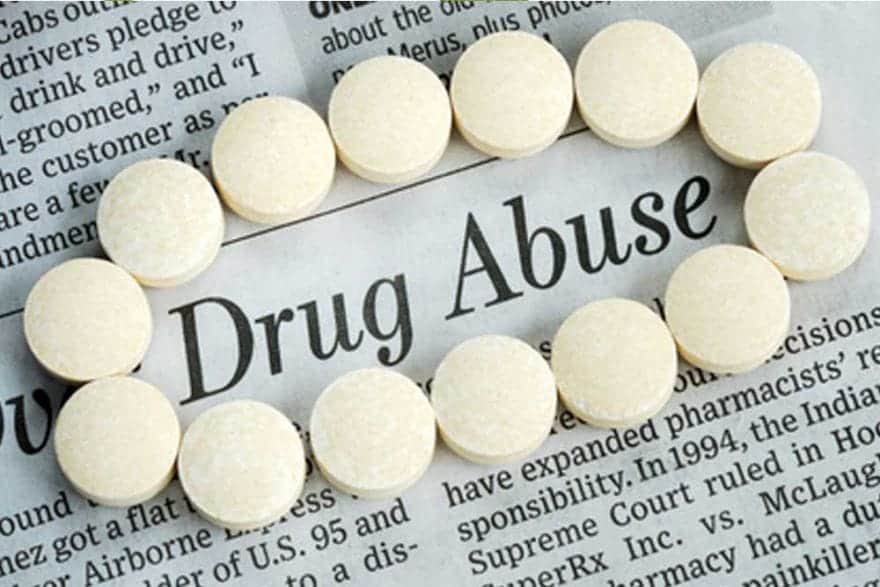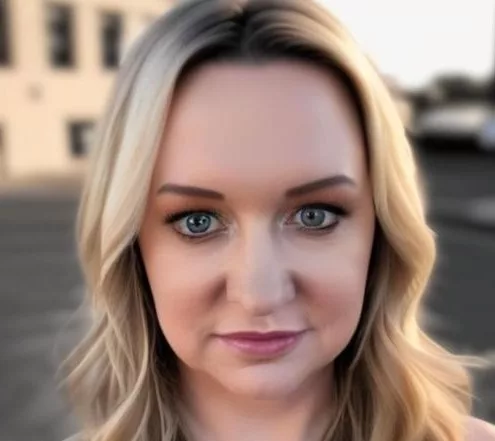It is difficult to see a loved one struggling, particularly if you are unsure of the cause. If you suspect a loved one may be misusing or addicted to drugs or alcohol, there are signs that may help you determine that there is a problem. This page will give a brief overview of the signs and symptoms of various substance use disorders and what steps you can take to help your loved one.
Diagnosing a Substance Use Disorder
Only a professional can diagnose a substance use disorder (addiction to a substance), but you can look out for general criteria for diagnosis. The Diagnostic and Statistical Manual of Mental Health Disorders (5th edition) (DSM-5) gives the following general criteria for a substance use disorder:1(pg.483)
- Using the substance in larger doses or for longer periods of time than originally intended
- Having a persistent desire to cut back or stop using a substance but being unable to despite efforts to do so
- Spending increasing amounts of time obtaining, using, or recovering from the use of the substance
- Developing cravings or such a strong desire to use the substance that they are unable to think of anything else
- Continuing to use the substance despite failures to fulfill duties at work, home, or school due to substance use
- Continuing to use the substance when it knowingly causes or worsens social or relational problems
- Giving up previously important activities or commitments due to substance use
- Using the substance in physically hazardous situations
- Continued use of the substance despite knowing it is causing or worsening chronic physical or psychological problems
- Developing tolerance to the substance (requiring increasing doses to achieve the original desired effect)
- Experiencing withdrawal symptoms when cutting back or abstaining from the substance
Though these are general criteria, not all substances cause tolerance or withdrawal symptoms.1(pg.483) And, not every person who develops a substance use disorder displays all of the symptoms.1(pg. 483) Getting a professional evaluation and diagnosis is important for people to make an appropriate recovery plan.
Even before substance use disorder develops, you can be aware of signs and symptoms to determine if a loved one is using a particular substance. You may notice social and relational changes in your loved one due to substance use, but you can also look for physical signs of intoxication or withdrawal from particular substances.
Signs and Symptoms of Alcohol Misuse
Alcohol misuse and addiction can cause short- and long-term consequences. With chronic or heavy alcohol use, a person may develop tolerance and appear to function normally even when drinking.2(history and physical) The level of tolerance, amount of alcohol ingested, speed of metabolism, biological sex, and food co-ingested can all affect a person’s symptoms from drinking.2(history and physical)
Signs and symptoms of alcohol intoxication may include:2(history and physical)
- Mood changes
- Loss of coordination
- Slurred speech
- Memory loss
- Impaired judgment
- Relaxation and lowered inhibition
- Decrease in fine motor control
- Nausea
- Vomiting
- Low body temperature
- Slowed breathing
- Coma
- Death
Withdrawal signs and symptoms from chronic alcohol use may include:3(history and physical)
- Elevated blood pressure
- Difficulty sleeping
- Tremors
- Anxiety
- Digestive tract problems
- Headache
- Agitation
- Racing heart
- Hallucinations
- Life-threatening seizures
- Delirium tremens
Signs and Symptoms of Benzodiazepine Misuse
Though benzodiazepines have significantly different legal purposes than alcohol, their effect on the body as a CNS depressant is similar.4(toxicity) They are legally prescribed for anxiety disorders, insomnia, treatment and prevention of seizures, agitation, and sedation.4(indications) Benzodiazepines are sometimes misused for their euphoric side effects at high doses or to enhance or minimize other drug effects.5(benzodiazepine abuse)
Signs and symptoms of benzodiazepine intoxication may include:5(toxicity and side effects)…and below that section
- Feeling drowsy
- Impaired concentration
- Loss of balance and coordination
- Muscle weakness
- Mental confusion
- Amnesia
- Increased excitement
- Irritation or aggression
- Disinhibition or impulsivity
- Depressed mood
- Emotional blunting
- Respiratory slowing
Possible signs and symptoms of benzodiazepine withdrawal are very similar to alcohol withdrawal and can include:1(pg.558, diagnostic features), 5(short-term withdrawal symptoms)
- Anxiety
- Increased heart rate
- Elevated blood pressure
- Elevated body temperature
- Sweating
- Tremor
- Insomnia
- Nausea or vomiting
- Seizures
- Hallucinations
- Delirium tremens
Signs and Symptoms of Opioid Abuse
Opioids are a powerful class of drugs that are legally prescribed for acute and chronic pain.6(indications) They work by engaging receptors in different areas of the brain and have numerous side effects.6(mechanism of action and adverse effects)People may misuse prescription opioids or acquire illegal forms (heroin and illicitly manufactured fentanyl) from friends or strangers on the street.7(what are narcotics, and what is their origin) Depending on the origin and type of opioid, they may come as a tablet, skin patch, powder, solid chunks (in shades of white, brown, and black), liquid form, syrups, suppositories, and lollipops.7(what do they look like)
Whether a person swallows, injects, smokes, or sniffs the drug for consumption, signs and symptoms of opioid intoxication or overdose include:6(adverse effects)
- Feelings of general dissatisfaction
- Euphoric mood
- Sedation
- Dangerously slowed breathing
- Constipation
- Hormone imbalances
- Slowed heart rate and other heart problems
- Convulsion
- Nausea
- Vomiting
- Itchiness
- Constricted pupils
- Increased sensitivity to pain
- Slurred speech1(pg.547, diagnostic features)
- Impaired memory or attention1(pg.547, diagnostic features)
- Coma1(pg.547, diagnostic features)
Signs and symptoms of withdrawal from opioids after chronic use can include:1(pg.548, diagnostic features)
- Anxiety
- Feeling restless
- Body aches
- Increased irritation
- Increased sensitivity to pain
- Feelings of general dissatisfaction
- Nausea or vomiting
- Teary eyes
- Runny nose
- Dilated pupils
- Goosebumps
- Sweating
- Diarrhea
- Yawning
- Fever
- Insomnia
- Spontaneous ejaculation in males1(pg.549, associated features)
Signs and Symptoms of Stimulant Abuse
Stimulants, including methamphetamine and cocaine, are a dangerous class of drugs that cause a wide variety of effects on the person using them.1(pg.566)Affording a continuous supply of stimulants is difficult for most people, and they can become involved in dangerous or illegal activities in exchange for drugs or money for drugs when addiction develops.1(pg.566 functional consequences of stimulant use disorder) If you are concerned about a loved one’s stimulant use, watching for physical, social, and behavioral changes may help identify a stimulant problem.1(pg.566, functional consequences of stimulant use disorder)
Some signs and symptoms of stimulant intoxication, recent stimulant use, and chronic use can include:1(pg. 566, functional consequences…, and pg. 567 stimulant intoxication)
- Racing heart or slowed heart rate
- Dilated pupils
- Abnormal (elevated or lowered) blood pressure
- Sweating or chills
- Nausea or vomiting
- Apparent weight loss
- Constant physical movement or an overall decrease in physical movements
- Muscle weakness
- Slowed breathing
- Chest pain
- Abnormal heart rhythms
- Confusion
- Seizures
- Erratic movements or muscle spasms
- Coma
- Chronic nasal inflammation (including irritation, bleeding, or perforated nasal septum)
- Cough or bronchitis
- Scarring from puncture marks on forearms or easily accessible veins
- Stroke
- Heart attack
- Gum disease (meth)
- Tooth decay
- Mouth sores
- Unexplained traumatic injury
- Skin injury from picking at skin
Signs and symptoms of stimulant withdrawal can include:1(pg. 569,stimulant withdrawal)
- Strongly dissatisfied mood or feeling of unease
- Extreme fatigue
- Unpleasant dreams
- Changes in sleep (insomnia or increase in sleep needs)
- Increase in appetite
- Changes in movement (slowed or agitated motion)
- Significantly slowed heart rate
- Craving for stimulant of use
- Depressed mood 1(pg. 570 associated features..)
- Suicidal thoughts1(pg. 570 associated features)
Signs and Symptoms of Marijuana (Cannabis) Abuse
Despite its federally illegal status, about 18% of Americans used marijuana in 2019.8(fast facts) Though widely used, marijuana (cannabis) is not without dangerous side effects, and about 30% of people who use it have marijuana use disorder.8(fast facts) People may smoke dried leaves from the cannabis plant in hand-rolled cigarettes, water pipes (bongs), or filled cigar wrappers.9(how do people use marijuana) If not smoked, the active ingredient of marijuana (THC) can be ingested through vaporization, eating food baked or mixed with marijuana, or brewing it as a tea.9(how do people use marijuana) Marijuana extracts are also available as a gooey liquid, a soft lip balm-like solid, or a hard amber solid that deliver dangerously high amounts of THC to the consumer when used.9(marijuana extracts)
Short- and long-term signs and symptoms of marijuana use or overdose can include:1(pg.514, functional consequences…, 516-517, diagnostic features)
- Bloodshot eyes
- Increased appetite
- Dry mouth
- Increased heart rate
- Euphoria
- Sedation
- Overall lethargy
- Memory impairment
- Distortion in sense perception
- Loss of motor coordination
- Feelings of slowed time
- Anxiety
- Feelings of general discontent
- Withdrawal from social interactions
- Decrease in general cognition
- Generally reduction in motivation
- Psychotic episodes
- Worsening or triggering the development of other mental disorders
Withdrawal from chronic marijuana (cannabis) use may include:1(pg.518, diagnostic criteria, and diagnostic features)
- Feelings of irritation, anger, or aggression
- Feeling nervous or anxious
- Insomnia or vivid dreams
- Decrease in appetite or loss of weight
- Feeling restless
- Depression
- Abdominal pain
- Tremor
- Sweating
- Fever
- Chills
- Headache
How to Help a Loved One With Substance Use Disorder
After a person develops a substance use disorder, withdrawal symptoms can make it dangerous or extremely difficult to heal on their own. In addition, feelings of shame, denial, or fear of further harming relationships can prevent them from seeking help. Learning as much as you can about their substance use and articulating your concerns with care can help prepare you for a conversation with them about it.
If you are concerned about a loved one’s substance use, there is help available. Virtue Recovery Center has rehabs available in Arizona, Oregon, and Texas that can address your loved one’s substance use problem. Professionals are available 24/7 to help guide you through the enrollment process, answer any questions you may have about treatment, and grant assistance in determining the best path for your loved one. Call today to find out the first steps you can take to help the ones you love achieve freedom from addiction.
Looking for additional information on alcohol addiction? Check out our article on whether alcoholism is hereditary.
Resources:
- American Psychiatric Association. (2013). Diagnostic and statistical manual of mental disorders (5th edition).
- LaHood, A.J., & Kok, S.J. (2022). Ethanol toxicity. StatPearls Publishing.
- Newman, R.K., Stobart Gallagher, M.A., & Gomez, A.E. (2022). Alcohol withdrawal. StatPearls Publishing.
- Bounds, C.G., & Nelson, V.L. (2021). Benzodiazepines. StatPearls Publishing.
- Longo, L.P., & Johnson, B. (2000). Addiction: Part 1. Benzodiazepines—side effects, abuse risk and alternatives. American Family Physician. 61(7), 2121-2128.
- Cohen, B., Ruth, L.J., & Preuss, C.V. (2022). Opioid analgesics. StatPearls Publishing.
- DEA. (2020). Drug fact sheet: narcotics.
- CDC. (2021). Marijuana and public health: data and statistics.
- NIDA. (2019). Cannabis(marijuana) drugfacts.



























